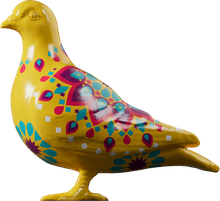Fashion — 1831-1840
Dressing gown
This gentleman's dressing gown is made from cotton block printed in madder colours with a Indian inspired 'buteh' or 'paisley' pattern which can be dated with reference to ladies' shawls of the 1830s. Many printed cottons were inspired by shawls, first those imported from India, then later from British produced examples. The gown is said to have been worn by Francis John Close, the grandfather of the donor, around 1830.
The dressing gown has a shawl collar, and long sleeves gathered at the shoulder with a turn back cuff. It fastens by overlapping the collar with a set of three pairs of self fabric shaped tabs, buttoning together. Two buttons in each right hand side tab can adjust the fit of the garment. There is a flapped pocket below the waist seam at each side. While the gown is fitted to the upper body, the skirts are constructed with a panel at each side, which is seamed to a third panel at the back, and has an inverted pleat at centre back. The loose pleats each side of the centre back are finished with a vertical tab of self fabric decorated with a single button. A covered button sits each side of the centre back at the waist. The upper body lined with a light brown plain weave cotton. It is hand stitched throughout.
- Category:
- Fashion
- Object ID:
- 60.96
- Object name:
- dressing gown
- Object type:
- Artist/Maker:
- —
- Related people:
- Related events:
- Related places:
- Production date:
- 1831-1840
- Material:
cotton
- Measurements/duration:
- L 1270 mm (front), C 900 mm (chest), C 840 mm (waist), C 1040 mm (hips), W 410 mm (shoulder), L 690 mm (sleeve), C 2500 mm (hem), L 1510 mm (back)
- Part of:
- —
- On display:
- —
- Record quality:
- 100%
- Part of this object:
- —
- Owner Status & Credit:
Permanent collection
- Copyright holder:
digital image © London Museum
- Image credit:
- —
- Creative commons usage:
- —
- License this image:
To license this image for commercial use, please contact the London Museum Picture Library.

